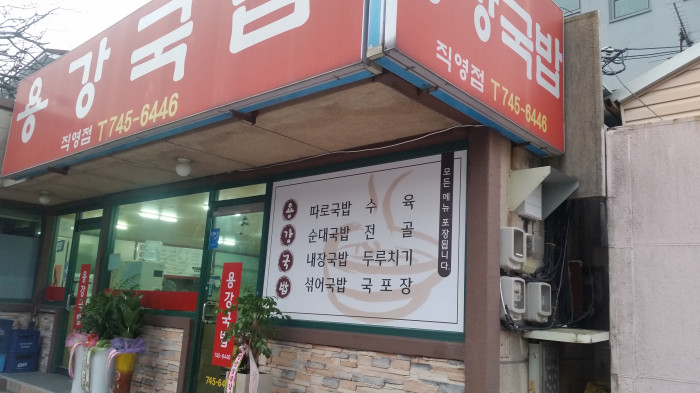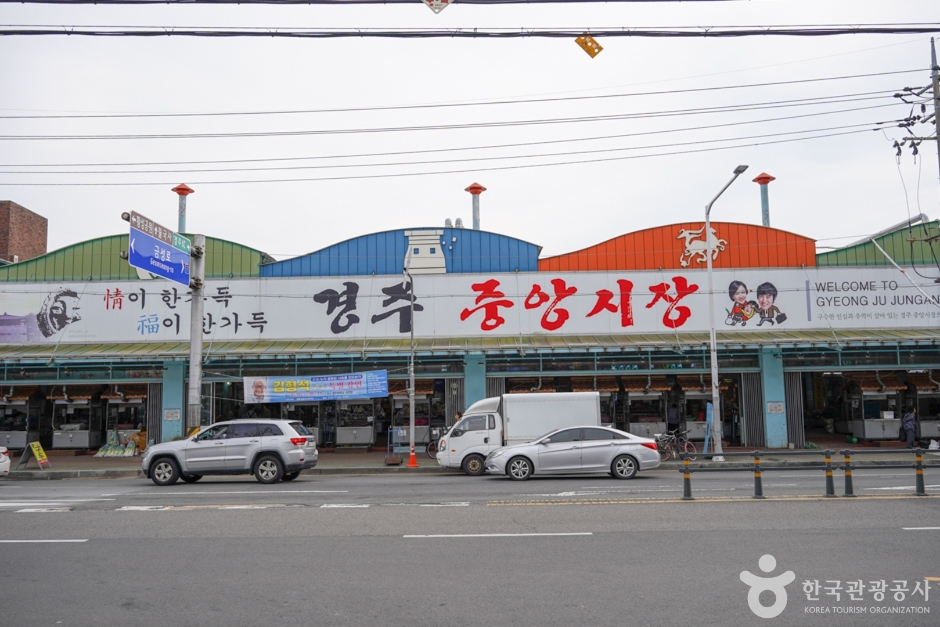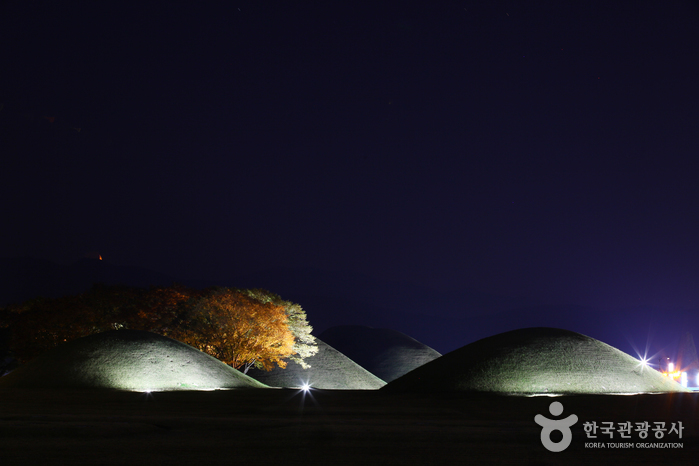Wiyeonjae Hanok Stay [Korea Quality] / 위연재 [한국관광 품질인증/Korea Quality]
670.8538090735394m 4 2021-03-29
7, Jjoksaem-gil, Gyeongju-si, Gyeongsangbuk-do
This hanok (traditional Korean house) is located very near to Cheomseongdae Observatory. Its location in front of the Gyeongju Historic Areas allows guests to reach major sights in Gyeongju like Daereungwon Ancient Tomb Complex, Donggung Palace and Wolji Pond, and Hwangnidan-gil Street by foot. This hanok symbolizes the historicity of the city of Gyeongju in that during its construction a female skeleton and accessories made out of precious metals were excavated from the site. The accommodation’s name comes from the idiom “Muwijayeon (leaving nature as it is),” combining bamboo and pine trees with green grass, show its dedication to ideals of rest and philosophy.
There are five rooms in total, all ondol (under-the-floor heating system) rooms for two. Korean paper lining the walls and old-fashioned furniture speak to the ideal beauty of hanok. The raised floor space, which is attached to the “Munmu” room, is a great place to enjoy the scenery and take pictures. All rooms have modern bathrooms with shower facilities, and a complimentary breakfast is served in the cafe on site from 8:00 to 9:00 in the morning. The complex has abundant parking spaces for the guests.
Yongganggukbap (용강국밥)
673.2463610416448m 171 2021-03-20
70, Bonghwang-ro, Gyeongju-si, Gyeongsangbuk-do
+82-54-745-6446
The locals’ favorite restaurant that sells Korean-style soups. The best menu at this restaurant is rice soup. This Korean dishes restaurant is located in Gyeongju-si, Gyeongsangbuk-do.
Festival de los Cerezos de Gyeongju (경주 대릉원돌담길 벚꽃축제)
682.0247284639885m 61764 2024-03-19
Gyerim-ro 10, Gyeongju-si, Gyeongsangbuk-do
054-777-5952
Gyeongju Soohojeong [Korea Quality] / 경주수호정 [한국관광 품질인증]
718.9421539974396m 10143 2020-09-08
15-15, Poseok-ro 1068beon-gil, Gyeongju-si, Gyeongsangbuk-do
+82-10-2379-7248
Gyeongju Suhojeong, located in front of the Gyeongju Daereungwon, is a Hanok guesthouse in a ㄱ shape. The traditional house was built in 2015 in accordance with traditional architecture using natural materials such as pine tree, red clay, straw, and others; thus, it is cool in summer and warm in winter. Planted along the wall next to the door are Korean hornbeams, top trees, maple trees, and elm trees. The climbing roses on the wall bloom in May and offer a great sight. The spacious yard with a stone table is a great place to chat with fellow guests. There are seven rooms in total and a cafeteria which doubles as a lounge. Each room with a bathroom has modern facilities that suit traditional beauty. Gyeongju Station and Gyeongju Intercity Bus Terminal are only five minutes away on foot, making the trip to the guesthouse by public transport easy. Sitting right next to the Hwangridangil Street, the accommodation offers great access to popular restaurants and fashion places of Gyeongju, and to major tourist attractions such as Daereungwon, Cheomseongdae, Balwolseong, Anjapji, and Gyochon Village.
Observatorio Cheomseongdae de Gyeongju (경주 첨성대)
877.9267991593077m 11416 2023-01-03
Cheomseong-ro 140-25, Gyeongju-si, Gyeongsangbuk-do.
+82-54-772-3843
Cheomseongdae es el observatorio astronómico más antiguo que existe en Asia. Construido durante el reinado de la reina Seondeok (632-647), fue utilizado para observar las estrellas y pronosticar el tiempo. Esta construcción de piedra es una hermosa combinación de líneas rectas y curvas, y fue designada como Tesoro Nacional nº 31 el 20 de diciembre de 1962. Cheomseongdae fue construido con forma cilíndrica, con piedras de 30 cm de diámetro. Fueron apiladas 362 piedras para hacer 27 niveles. Aproximadamente a 4,16 m de altura desde el pie hay una entrada cuadrada de 1 ㎡ y un lugar para colocar una escalera de mano bajo ella. El interior está repleto con tierra hasta el nivel 12, y los niveles 19, 20, 25 y 26 tienen todos largas rocas aferradas en dos áreas, para formar la letra china “井” (jeong). Mide 9,17 m de altura y la piedra de la base de cada lado mide 5,35 m. El equinoccio primaveral y otoñal, los solsticios de invierno y de verano y los 24 períodos solares (también conocidos como el año solar astronómico) eran determinados por la observación de las estrellas. La letra “jeong” de piedra de la cima del observatorio, se cree que se ha utilizado como estándar para decidir las direcciones: norte, sur, este y oeste. Las 362 piedras utilizadas para construir Cheomseongdae representaban los 362 días del año lunar.
Mercado Jungang de Gyeongju (경주 중앙시장)
883.3165730392557m 13458 2024-02-21
Geumseong-ro 295, Gyeongju-si, Gyeongsangbuk-do
SOSEOLJAE [Korea Quality] / 소설재(첨성대점) [한국관광 품질인증]
899.6510999322136m 1156 2021-04-05
46, Poseok-ro 1050beon-gil, Gyeongju-si, Gyeongsangbuk-do
+82-54-7357-7412
As a traditional Korean guesthouse with modern facilities but with some traditional features of a Korean house such as wooden floor and ceramic tiled roof intact, Soseoljae is located next to Cheomseongdae in Gyeongju. It also has an old well in the garden. Each guestroom is furnished with bathroom and air conditioner for the convenience of the guests. The single-story guesthouse has a total of 11 rooms that can accommodate 2-4 people depending on the size of the room. The two-story stand-alone guesthouse located right next to the main gate can accommodate six, and it has a small tea room. The guesthouse has a cafe at the entrance. It's conveniently located near Cheomseomdae, Daereungwon Ancient Tombs, and Hwangnyongsaji (Hwangnyongsa Temple Site) as well as Gyeongju Station and Gyeongju Express Bus Terminal.
Hanokinn [Korea Quality] / 한옥人(한옥인) [한국관광 품질인증/Korea Quality]
915.2713827664686m 3 2023-04-13
19, Poseok-ro 1050beon-gil, Gyeongju-si, Gyeongsangbuk-do
This hanok (traditional Korean house) is located at the center of Hanok Conservation Area, known as Hwangnidan-gil Street. To the north lies the old alley that connects to Cheomseongdae Observatory. The house has sarangchae building, byeolchae building, and main building, which is used as a gallery and café, surrounding the grass lawn in the center. All rooms are equipped with ondol (under-the-heating system) and a red clay finish, and each room has a bathroom with shower facilities.
Sarangchae is a two-story hanok building with a hipped-and-gable roof. Its first floor is occupied by a double room and a family room, which can support up to 4 people. Byeolchae is a single-floor hanok with a gable roof, containing two double rooms and a raised floor space. The main building’s gallery contains a hanok experience room, cafe, restaurant, and a traditional tea room. A Korean-style breakfast is offered in the cafe, and the management also offers experience programs like tea ceremony, traditional games like yunnori (board game), and traditional musical instruments like janggo (hourglass-shaped drums) and gayageum (twelve-stringed zither).
Hwangnamguan [Korea Quality] / 주식회사 황남관 [한국관광 품질인증]
1.0 Km 18904 2023-04-13
1038, Poseok-ro, Gyeongju-si, Gyeongsangbuk-do
+82-10-3518-4582
Located in Gyeongju City, Hwangnamgwan is a traditional Korean style accommodation which opened in April 2014. The place looks like a small hanok village with 4 one-story buildings and 2 two-story buildings, constructed on about 5000㎡ of building site. The buildings are equipped with modern convenience facilities but manage to preserve the antique flavor of traditional Korean house. All rooms are equipped with a bathroom. A bathtub is installed in the largest room, Numaru Suite. Auxiliary facilities include the seminar room which is located in the two-story building. There are a cafe and a pizza restaurant on the first floor for meetings or simple meals. Guests are given discount coupons for the cafe.
Various traditional plays can be enjoyed in the hanok. It is possible to take photos with the beautiful Hwangnamgwan building in the background wearing traditional Korean clothes. You can also play Neolttwigi, Tuho, and Jegichagi in the wide yard and experience twisting legs, bastinado, turning the millstone, fulling, Pogurak (dancing play), etc. which have appeared on TV dramas. It is possible to receive discounted services at nearby affiliated facilities: 50% discount at Spalux Jjimjilbang, Kids Cafe, and Sport Town Bowling Center. Famous tourist attractions such as Cheonmachong Tomb, Cheomseongdae Observatory, and Banwolseong Fortress are within walking distance; and the National Gyeongju Museum and Gyeongju World Culture Expo Park are likewise not far from Hwangnamgwan.
Tumba Real del Rey Naemul de Gyeongju (경주 내물왕릉)
1.0 Km 18618 2022-09-19
Gyo-dong, Gyeongju-si, Gyeongsangbuk-do
El rey Naemul fue el 17º monarca del reino de Silla (en el poder de 356 a 402) y se convirtió en el segundo rey de la familia Kim. El rey Naemul fue conocido como el primero en iniciar el título de rey de “Maripgan” y fue conocido por difundir los avances culturales de China al pueblo coreano. Cuando atacaron las fuerzas aliadas de Baekje y Japón, pidió ayuda a Gwanggaeto el Grande de Goguryeo y llevo a la gente a la victoria, contribuyendo al aumento de la fuerza del Reino de Silla. Después de su gobierno, el trono fue cedido exclusivamente a miembros de la familia Kim.
La tumba del rey Naemul es un montículo grande (22 m de diámetro y 5,3 m de altura) y se encuentra en la colina norte de la Escuela Neoconfuciana de Gyeongju. Un borde de piedras naturales se expone alrededor de la parte inferior del montículo, lo que apunta al hecho de que la tumba de la cámara interior estaba hecha de piedra. En el documento histórico Samguk Sagi (Historia de los Tres Reinos), no se encuentran registros sobre la tumba, pero el Samguk Yusa (Memorabilia de los Tres Reinos) describe la tumba del rey está en el suroeste de Cheomseongdae, que coincide con la ubicación de la tumba.
![Wiyeonjae Hanok Stay [Korea Quality] / 위연재 [한국관광 품질인증/Korea Quality]](http://tong.visitkorea.or.kr/cms/resource/51/2708951_image2_1.jpg)

![Gyeongju Soohojeong [Korea Quality] / 경주수호정 [한국관광 품질인증]](http://tong.visitkorea.or.kr/cms/resource/11/2635611_image2_1.jpg)


![SOSEOLJAE [Korea Quality] / 소설재(첨성대점) [한국관광 품질인증]](http://tong.visitkorea.or.kr/cms/resource/61/2530261_image2_1.jpg)
![Hanokinn [Korea Quality] / 한옥人(한옥인) [한국관광 품질인증/Korea Quality]](http://tong.visitkorea.or.kr/cms/resource/65/2707565_image2_1.jpg)
![Hwangnamguan [Korea Quality] / 주식회사 황남관 [한국관광 품질인증]](http://tong.visitkorea.or.kr/cms/resource/06/2635706_image2_1.jpg)

 Español
Español
 한국어
한국어 English
English 日本語
日本語 中文(简体)
中文(简体) Deutsch
Deutsch Français
Français Русский
Русский